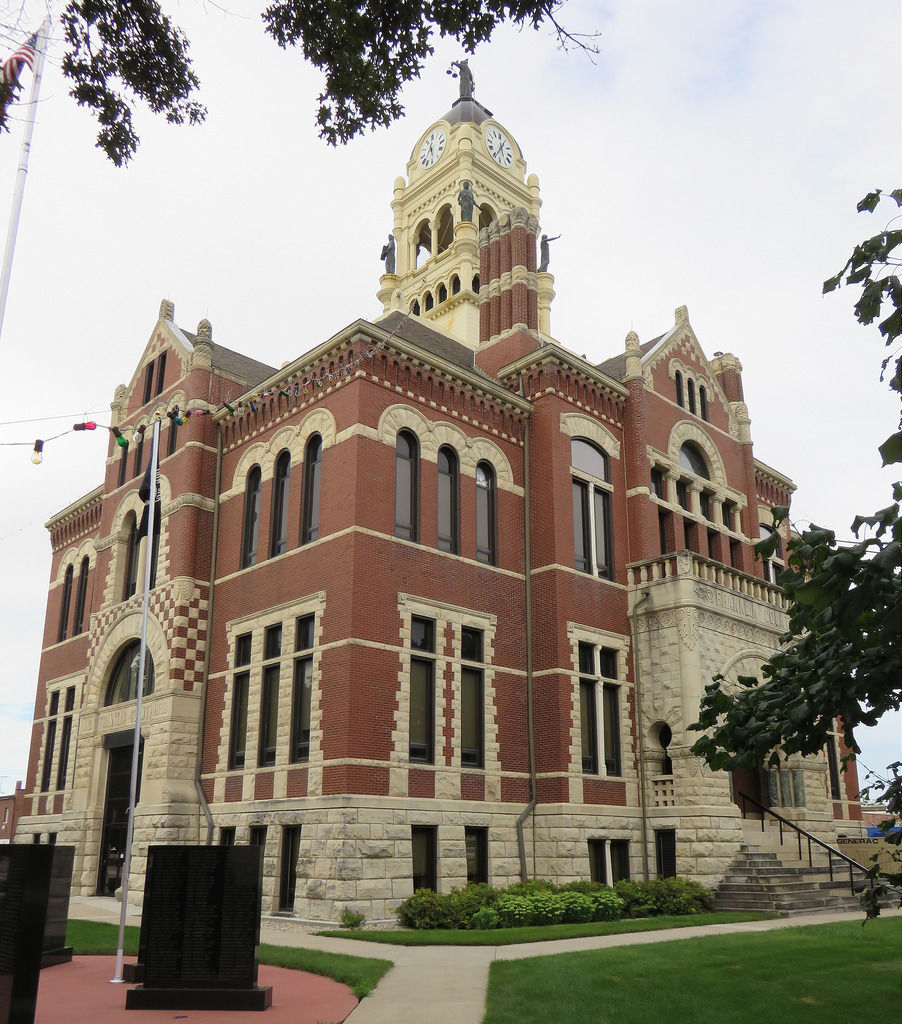The first attempt to establish a public library in Hampton by use of tax supported funds was made in 1869. This was shortly after the Civil War, and the citizens of Iowa were getting back to a more regular life. This early tax initiative failed. Approximately twenty years later, in the winter of 1889, the subject was brought up again to establish a library in Hampton. Under the old school law, school districts could establish a tax to support a community library. A motion was made to place a one-mill tax on the March ballot. The election was held on March 11, 1889, and the tax passed 97 to 76. This tax brought about $300.00 to start a library. The school board had to vote again on how to allocate the funds and that was decided upon at the meeting on March 10, 1890 after the $300.00 had been collected. At that point, the public library was now funded and established. There were several issues as to whether the tax levee was properly obtained, but this legal wrangling did not stop the school from buying three hundred dollars worth of new books. The books were then placed in a basement room in the Beed Block of Hampton, IA. Mayor J.M. Hemingway proposed that a vote be taken to establish a permanent library in late winter 1891. The election was held on March 1, 1891 and passed 97 to 38. The mayor appointed five trustees, two of which were school board members who had supported the library from the very beginning.The Hampton Public Library was officially formed by a vote of the Hampton citizens in 1889. In January 1892, a contract was made between the library board and the county board of supervisors to procure a new location for the library. The library was then moved to the southwest basement corner of the courthouse. The room had not been plastered or completed. The library board was obligated to pay $162.00 in advance for use of the room. The room was poorly suited for the library and in 1896 the library board requested to rent an adjacent room in the basement. Another contract was drawn up, and this room also had to be plastered and finished by the library board before books and other materials could be moved in. The new room was used as a reference and reading room and expanded library services to the community.
Early in 1901, it was brought to the attention of the library board and several interested citizens that Andrew Carnegie was offering grants to build public libraries. Senator J.P. Dolliver contacted Andrew Carnegie personally about obtaining a grant for Hampton, and an offer was made. The city would receive $10,000.00 for a new library if certain conditions could be met. A site was procured for $3,660.00, and soon construction began. Liebbe, Nourse, & Rasmussen, Architects from Des Moines designed the building.
The Carnegie library building took almost two years to complete. There were several problems and delays in the construction process. The library board was openly criticized for all the delays and problems, and there was little public discussion about these problems. It seems that there were costs overruns and poor planning on the part of the board to complete the project. The Carnegie grant did not include such important things as heating, electric light fixtures, shelving and other furnishings. Other funds had to be raised to complete the project. The new building cost almost seventeen thousand dollars and was way over budget.
The library building, after two years of construction, was formally opened and dedicated October 6, 1905. The dedication program began with exercises by the children of the Hampton Public Schools in the Library at 2 p.m. A short address by Miss Alice S. Tyler, Secretary State Library Board with a reception from 3 - 5 p.m. An Evening Program was held in the opera house at 8:00 p.m. with Mayor S. J. Parker, Presiding. Music was provided by the High School Chorus, and B.H. Mallory presented the Library Building to the citizens of Hampton. Acceptance of same on behalf of the citizens followed by Judge W.D. Evans. A reception was held following the dedication ceremonies at the new library. The new building was and still is faced with buff-brick and adorned with terracotta dental trim. Above the arched doorway is a terracotta plaque stating "Hampton Public Library Gift of Andrew Carnegie." A terracotta date is encircled above the doorway plaque. The interior has fine quarter sawn oak woodwork and furnishings. A small art glass dome with electrolier fixtures graces the ceiling above the charge desk. Oak Ionic columns still face each side of the charge desk. Book stacks radiate out from in back of the charge desk in a semicircular manner. The floor once mosaic tile is now carpeted. The building was modernized in the 1960's, and all of the original oak tables and chairs were removed as well as the original circulation desk. New windows were added and the building renovated carefully to retain its original historical value and to provide for handicap accessibility in 1987. The Carnegie Library remains a beautiful historical building which still serves the community. The building was added to the National Register in 1983 and again in 2003 as part of the Historical District of Hampton.

